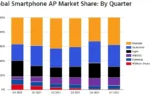Have you ever heard of the GraniteShares 2x Long NVDA Daily ETF? It’s a special kind of investment that tries to double the money you could make from Nvidia, a big tech company. But guess what? Last month, this fund lost a huge chunk of its value—over 26%! This is a big deal because it shows how risky these types of investments can be. In this article, we’ll explore why the GraniteShares ETF dropped so much, what it means for investors, and why understanding the risks of leveraged ETFs is super important. Let’s dive in!
| Category | Details |
|---|---|
| ETF Name | GraniteShares 2x Long NVDA Daily ETF (NVDL) |
| Market Cap | $4.8 billion |
| Current Price | $52.86 (as of Feb 5, 2025) |
| Price Change | $5.01 (10.47%) |
| January Performance | Fell 26.1% |
| Inception Date | December 2022 |
| Nvidia Stock Return Since Inception | 591% |
| ETF Return Compared to Nvidia | More than doubled Nvidia’s downturn |
| Management Fees | 1.15% annually |
| Risks of Leveraged ETFs | Amplified price changes, especially during downturns |
| Advice for Investors | Caution is advised; consider other investment opportunities |
Understanding Leveraged ETFs
Leveraged ETFs, like the GraniteShares 2x Long NVDA Daily ETF, are special types of funds that aim to double the returns of the underlying stock. This means if Nvidia’s stock goes up, the ETF is supposed to go up even more! However, if Nvidia’s stock drops, the losses can be much bigger too. This is why it’s really important for investors to know how these funds work, especially if they are new to investing.
While leveraged ETFs can offer exciting opportunities for quick profits, they also come with a lot of risk. Just like riding a rollercoaster, the ups can be thrilling, but the downs can be scary! If you decide to invest in these types of funds, make sure to keep a close eye on the market. Understanding the risks helps you make better decisions and avoid losing money when things don’t go as planned.
The Risks of Investing in High-Tech Stocks
Investing in companies like Nvidia can be very tempting because they are involved in cutting-edge technology. However, just like with any investment, there are risks involved. For example, when a new competitor, like DeepSeek, enters the market with exciting new products, it can hurt Nvidia’s stock price. This means that if you own a leveraged ETF tied to Nvidia, your investment could drop even more due to these challenges.
It’s essential to remember that the tech industry can change quickly. What seems like a great investment today might not be as valuable tomorrow. So, before putting your money into high-tech stocks or leveraged ETFs, think carefully about the risks. Make sure you have a smart plan and consider talking to someone who knows a lot about investing to get good advice!
Making Smart Investment Choices
When it comes to investing, especially in something like the GraniteShares 2x Long NVDA Daily ETF, knowledge is power! Before jumping into any investment, it’s a good idea to do your homework. Look at how the company has performed in the past and what experts are saying about its future. This way, you can make better choices that suit your financial goals.
Also, consider diversifying your investments. Instead of putting all your money into one fund or stock, spread it out over different types of investments. This can help protect you if one investment doesn’t do well. Remember, investing should be about building wealth over time, not just chasing quick wins. By being careful and smart, you can enjoy a more secure financial future!
Understanding the Mechanics of Leveraged ETFs
Leveraged ETFs, like the GraniteShares 2x Long NVDA Daily ETF, are designed to amplify the returns of their underlying assets, often by utilizing financial derivatives. This means that when Nvidia’s stock rises, the ETF can capture greater gains, enticing investors looking for quick profits. However, this amplification works both ways. A drop in Nvidia’s stock price results in an even steeper decline for the ETF, as evidenced by the 26.1% plunge it experienced in January 2025, which far exceeded Nvidia’s losses.
The mechanics behind leveraged ETFs can be complex and may not be intuitive for all investors. They are generally meant for short-term trading strategies rather than long-term investments, as their performance can deviate significantly from the underlying asset over time. This divergence is due to daily rebalancing, which compounds the effects of volatility. For investors considering these instruments, understanding their structure and potential risks is crucial to making informed decisions.
The Impact of Market Sentiment on High-Volatility Stocks
Market sentiment plays a pivotal role in the performance of high-volatility stocks like Nvidia, which directly influences the GraniteShares 2x Long NVDA Daily ETF. In January 2025, negative sentiment arose after a competitor unveiled a groundbreaking AI model, prompting fears about Nvidia’s market dominance. As investors reacted to this news, Nvidia’s stock took a hit, triggering a chain reaction that severely impacted the ETF. This situation illustrates how external perceptions can swiftly alter the trajectory of leveraged investments.
Moreover, the volatility associated with high-growth tech stocks can lead to exaggerated movements in ETFs tied to them. When market sentiment shifts, even a minor piece of bad news can lead to substantial losses, as evidenced by the ETF’s plunge. Investors must remain vigilant and aware of the broader market landscape, as shifts in sentiment can create unexpected volatility in leveraged funds, making them a risky choice for those unprepared for such fluctuations.
Strategies for Navigating Leveraged ETF Risks
Navigating the risks associated with leveraged ETFs requires a strategic approach that balances potential rewards with the inherent dangers of these financial instruments. Investors should consider implementing strict stop-loss orders to limit potential losses and regularly reassess their investment positions. By maintaining a vigilant stance, traders can protect themselves against the extreme volatility that often accompanies leveraged products, especially in uncertain market conditions.
Additionally, diversifying a portfolio can help mitigate the risks tied to leveraged ETFs. Instead of heavily investing in a single leveraged product like the GraniteShares ETF, consider spreading investments across various asset classes and sectors. This strategy can cushion against the downturns of any one investment and provide a more stable overall portfolio performance, allowing investors to enjoy the potential upside of leveraged funds while minimizing their exposure to significant losses.
The Future of Nvidia and Its Impact on ETFs
As Nvidia continues to innovate and expand its capabilities in the artificial intelligence sector, its future performance will be a key driver for ETFs linked to its stock, such as the GraniteShares 2x Long NVDA Daily ETF. Analysts are closely monitoring developments in AI technology, as breakthroughs could significantly influence Nvidia’s competitive position and stock price. Investors must stay informed about Nvidia’s strategic moves and market trends to gauge the potential impact on their leveraged investments.
However, the landscape is not without challenges. Increased competition, like that from DeepSeek, underscores the need for vigilance among investors. If competitors continue to emerge with compelling alternatives to Nvidia’s offerings, it could lead to heightened volatility in Nvidia’s stock and, by extension, the ETFs associated with it. Understanding these dynamics will be crucial for investors aiming to navigate the complexities of the market and make informed decisions about their investments in leveraged ETFs.
Frequently Asked Questions
What is a leveraged ETF and why do people invest in it?
A **leveraged ETF** is a special fund that aims to double or triple the returns of a stock. People invest in it for the chance to make more money quickly, but it also comes with high risks.
Why did the GraniteShares 2x Long NVDA ETF drop so much in January 2025?
The GraniteShares ETF fell **26.1%** because it tries to double the returns of Nvidia’s stock, which also dropped significantly due to a competitor’s new technology.
What does it mean when someone says an ETF is risky?
When an ETF is called **risky**, it means its value can go up or down a lot in a short time. This can lead to losing money quickly, especially if the market changes.
How can a stock like Nvidia affect the GraniteShares ETF?
Nvidia’s stock affects the GraniteShares ETF because the ETF is designed to **track** Nvidia’s performance. If Nvidia does well, the ETF does well; if Nvidia drops, the ETF drops even more.
Why should investors be cautious with leveraged ETFs?
Investors should be cautious with leveraged ETFs because their **high rewards** can turn into high losses. It’s important to understand that these funds are better for short-term trading, not long-term holding.
What is the best way to learn about investing in stocks?
The best way to learn about investing is to read books, watch videos, and follow trusted financial experts. Joining investment clubs or using programs like **Motley Fool** can also help you learn more.
What are some alternatives to investing in risky ETFs?
Alternatives to risky ETFs include **index funds**, which track a whole group of stocks, or individual stocks with a good track record. These options are usually safer and can provide steady growth.
Summary
The GraniteShares 2x Long NVDA Daily ETF experienced a significant decline of 26.1% in January 2025, exacerbating Nvidia’s own price drop. This situation underscores the heightened risks associated with leveraged ETFs, which are designed to amplify returns but can lead to amplified losses. The ETF aims to double Nvidia’s returns, which had been impressive since its inception, but the recent downturn highlights the potential dangers of holding such investments over longer periods. Investors are cautioned about the volatility and risks of leveraged funds, especially during adverse market conditions.







